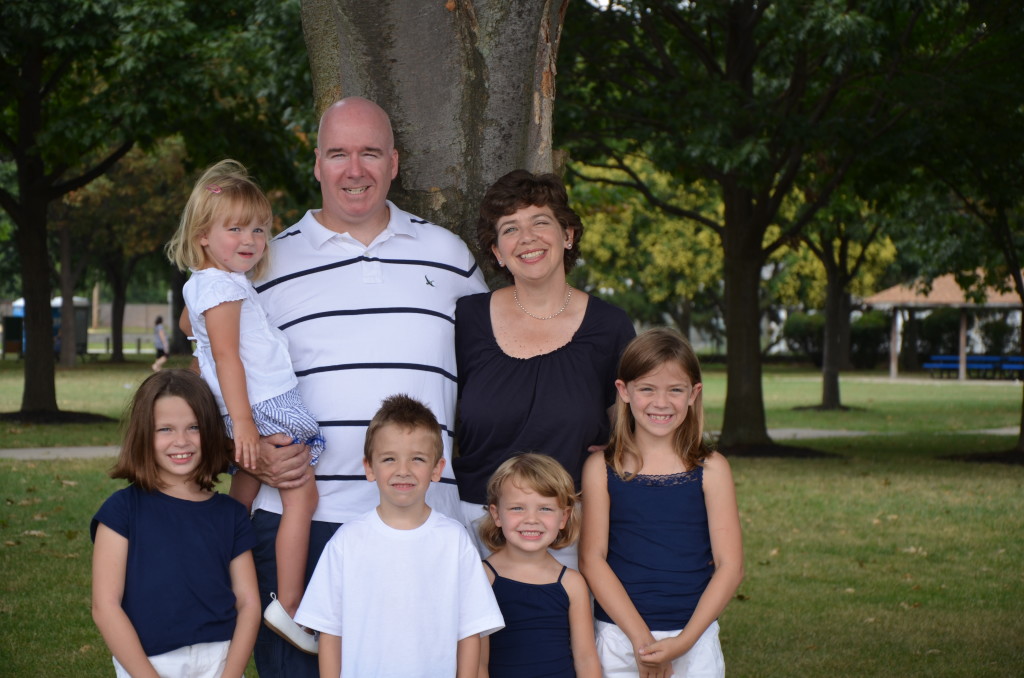
The following post was written and submitted by Tom Imburgia.
My July birthday allows me to say that cancer has been a part of my life from the very beginning. Reflecting back on my early adolescence I can recall being confused by the designation of being a cancer as a zodiac sign. Although I did not know what cancer was as it applied to human health, there was no mistaking it for anything positive within that context.
I can recall very vividly falling in love with science for the first time. As a child born in 1963, NASA and the Apollo projects dominated my early textbooks, and yet despite my fascination, I gradually gravitated to life science. My parents purchased my first copy of Gray’s Anatomy for me while I was a grade school kid, so by the time I reached high school I knew there would never be enough Biology for me to learn. Advanced Biology and Human Anatomy classes only fueled my passions, and as I entered college I had sights set on medical school and becoming a doctor. I remember thinking that the human body had to be the most complex organism to walk the face of the Earth, and I wanted to know everything I could about how it functioned and why.
Although I did well as an undergraduate Biology major, there were plenty of other college age kids who managed to make better medical school candidates. While my dreams of medical school evaporated, I did find myself employed as a research scientist working for one of the big pharmaceutical companies in the Philadelphia region. Cancer took on a different persona in my new role. Cancer became an intellectual problem to be solved. I spent my days actually tending to tumor cells, feeding them and providing living space for them in the effort to find a way to undo them. My work even included growing the now famous HeLa cells, the first successful in vitro cell line. These cells originated as a cervical tumor that eventually took the life of Henrietta Lacks in 1951. Cancer was a puzzle to be decipher, a riddle that thousands of people like me were trying to answer. What cancer was not to me at the time was real.
Four years ago in May while attending the First Holy Communion of my twin nieces, I was told by my sister Denise, that our youngest sister Debi had a tumor growing in her eye. The tumor was only discovered because it had grown large enough to begin interfering with her vision. Deb was being going to be treated at Wills Eye Hospital, which is where the world experts on ocular melanoma happen to have their practice. Although we were scared, our confidence and sense of optimism ran high. My sister was going to be treated by the best of the best, the doctors who literally wrote the book on this type of cancer.
Deb had a radioactive patch sewn over her eye to irradiate the tumor. The radiation was so strong that we were not permitted within a certain radius of her while the patch was in place. The radiation failed to shrink the tumor, and instead rendered Deb blind in that eye. Some time after this, Deb had a full physical evaluation that revealed that the melanoma had metastasized to her liver. Aggressive therapies were started as quickly as possible. Chemotherapeutics and attempts to starve the tumors in her liver by depriving them of blood supply all failed. Many brave battles were fought as my sister’s health continued to decline. Soon it was obvious that time was not our friend as medicine and science had done their best, and failed. Cancer had become real.
Deb elected to go on hospice so she could spend more time with her 5 little children and her husband. All of us watched helplessly as she grew increasingly weaker and more and more jaundiced. Along with the rest of my family, I was bedside as my sister drew her final breath, her hand clasped gently by our grief stricken mother. Cancer had evolved from a constellation I had been born under into a scientific problem that finally became what murdered my sister at the age of 43.
Fifteen years ago, I left research to become a high school science teacher. I find myself teaching primarily Human Anatomy and Physiology and Biology classes to a wide variety of students. Whether by design or coincidence, I work at Cardinal O’Hara High School, Debi’s alma mater. When her birthday rolls around in April, I face that day knowing that I will not be watching her have cake with her children. When the anniversary of her death on June the 4th arrives, I face the day knowing that I work in the spaces she once occupied as a young girl with her entire life in front of her. None of us knowing at the time that at 18 she had already seen little less than half of the days she would ever see. I also face those days with the thought that I did not have the cure to cancer in my head while working as a scientist, but maybe, just maybe one of the kids I teach does.